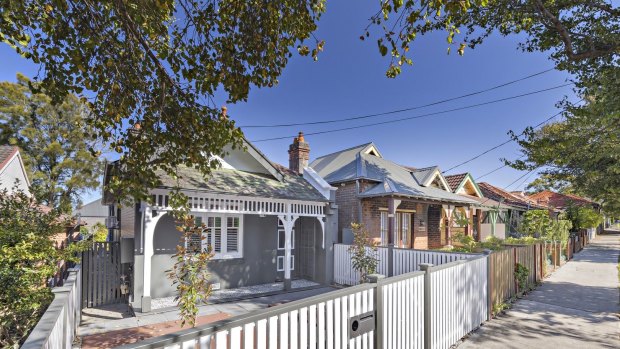Yes, your mortgage payments are higher, but relief may be in sight

Economists expect the Reserve Bank of Australia (RBA) to keep increasing interest rates until they hit 2.5 per cent to 3.5 per cent, depending on who you ask – significantly above the cash rate’s current level of 1.85 per cent.
Although that undoubtedly signals more mortgage repayment pain in the months ahead, the indications are that there is light at the end of the tunnel.
The release of slower-than-expected growth in US inflation, together with falling oil prices – a major driver in the direction of inflation – means our rates could peak towards the lower end of the range of forecasts.
More increases in interest rates and repayments are expected for variable rate mortgage holders
The high levels of debt held by Australian households suggests rate increases are particularly effective in taking the heat out of the economy, and to eventually curb inflation.
ANZ economists are maintaining a hawkish view, forecasting the cash rate to peak at 3.35 per cent by the end of the year, before starting to fall in the second half of 2024. They also expect reduced borrowing capacity resulting from higher rates to drive house prices lower, tipping capital city property prices to fall 18 per cent from their peak in March this year, before starting to recover in 2024.
However, Shane Oliver, chief economist at AMP, counters that expectations of a peak cash rate of more than 3 per cent is too aggressive, as the RBA is already gaining traction in terms of slowing household demand.
“We see the pace of cash rate hikes ahead slowing, peaking at around 2.6 per cent either at the end of this year or early next year, which is at the low end of market and economists’ expectations,” Oliver says.
“Rates are likely to be falling in the second half of next year,” he adds.
Only time will tell which view is closer to the mark.
In the minutes of the RBA board meeting on August 2, the central bank states it “expects to take further steps in the process of normalising monetary conditions over the months ahead, but it is not on a pre-set path”.
In other words, expect more rate rises. The RBA notes that the job market is tight, with wages growth likely to be higher, and inflation likely to peak later this year.
Even under Oliver’s more dovish view, those with variable-rate mortgages still face a big jump in repayments. And those borrowers rolling off fixed-interest mortgage rates will also feel the pain.
The RBA’s August rate rise is still being passed through by some lenders and Canstar expects the average mortgage rate – excluding introductory and first home buyer only loans – to be 4.73 per cent by early next month.
If the current 1.85 per cent cash rate peaks at 2.6 per cent, that would take the average variable mortgage rate to 5.48 per cent, assuming the coming rate rises are passed on to mortgage holders in full. That means the monthly repayment on a $1 million mortgage would rise to $5665, Canstar figures show.
It would bring monthly repayment increases since the first rise in the cash rate in May to $1460.
If the cash rate were to peak at 3.35 per cent, it would see the monthly repayment climb to $6144.
- Advice given in this article is general in nature and is not intended to influence readers’ decisions about investing or financial products. They should always seek their own professional advice that takes into account their own personal circumstances before making any financial decisions.
Most Viewed in Money
From our partners
Source: Read Full Article

